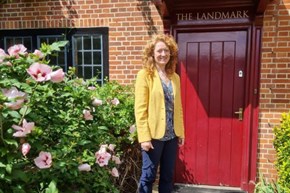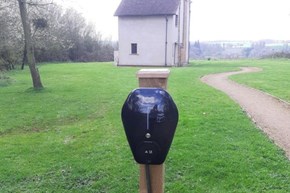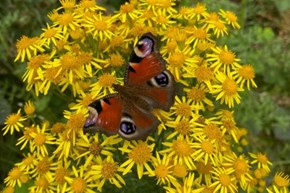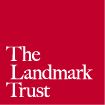Environmental Sustainability Q&A
We believe heritage is part of the solution to the extraordinary challenges of climate change and are committed to continuing to play our part in tackling them. We spoke to our Environmental Sustainability Manager, Alice Ogilvie to explore our efforts supporting the fight against climate change.
Please introduce yourself and tell us a little about your role
I have always been passionate about protecting our built heritage and I’ve been lucky enough to lead teams in The National Trust, English Heritage, National Trust for Scotland, V&A and Royal Academy of Arts. Most of my career has involved generating income from carefully managed events within these historic buildings, balancing commercialism with conservational requirements, which my degree in conservation has helped with. I have always been fascinated by nature, and this role at the Landmark Trust enables me to work with both our built and natural heritage.
As part of Landmark's mission to achieve net zero carbon emissions by 2045 and to halve our carbon emissions by 2037, my role involves working with a variety of teams across the charity to work towards this goal. This includes operational staff who manage the heating controls, recycling and cleaning products; surveyors who manage the renewable energy systems, draughtproofing and insulation; the finance team who accumulate and report on energy data; the warehouse team to source sustainable cleaning products and repair furniture; and the marketing team to promote our green activities.

What is Landmark doing to reduce energy and carbon emissions?
We recently reset the heating systems in all Landmarks to a mid-temperature which our housekeepers monitor each week, and we encourage guests to manage radiators responsibly by turning them back down when they are warm enough or go out. We have already seen a 12% reduction in energy consumption, and by conducting regular energy audits we have been able to quickly identify areas where energy use can be reduced. We have an ongoing programme of replacing our fossil fuel boilers with renewable systems. So far, 25 renewable systems have been installed, and we have committed to designing low carbon systems in all new Landmarks – including at Calverley Old Hall and The Station Agent’s House which will open next year. To support the use of electric vehicles, we have installed EV chargers at 22 Landmarks and we’ve seen an excellent take up from guests and plan to roll out more in the next few years. Meanwhile we are working on plans to change to renewable energy systems at 10 of our highest carbon emitting Landmarks.

Are historic buildings harder to make sustainable?
Most historic buildings are inherently sustainable: substantial, long-lasting, built from low-carbon materials and technologies in low-energy eras. But they can also present unique challenges when it comes to ensuring they meet modern expectations of comfort in a sustainable way. We are working hard to improve the thermal performance of our buildings by identifying the source of draughts and installing the relevant draughtproofing and insulation. Using infrared cameras, we have identified heat loss cracks in floors, windows and doors and we are working our way round each Landmark to seal these, whilst maintaining enough ventilation for old buildings to ‘breathe’. We are installing ‘chimney sheep’ to all unused open chimneys as they are often the biggest areas of heat loss, and we will be adding thermal linings to curtains to further reduce draughts and improve the comfort of our guests.
We also conduct regular energy audits to identify areas for improvement, for example at our current restoration project, The Station Agent’s House we are using lime plaster which has small pieces of cork added to improve its thermal properties. We aim to use other renewable energy sources where we can, such as solar panels which were installed as part of Fairburn Tower’s restoration.
Many Landmarks are located in natural, rural areas. What is being done to protect biodiversity?
The landscapes and gardens surrounding Landmarks are really important and their biodiversity often reflects the original design and purpose of these places, some with rare flora and fauna around them. We have carefully managed these landscapes to maintain their historical significance and for the enjoyment of guests. We control and remove invasive plants, replace trees when they are at the end of their life, and manage hedgerows and shrubs to provide good habitats. This year we have adjusted our mowing regimes at many sites, including Gurney Manor, Woodspring Priory and Llwyn Celyn, to provide grasses at different heights, leaving some areas a bit wilder to allow more natural growth, and it has been exciting to see butterflies, bees and grasshoppers appear.
We have selected several Landmarks around the country that offer more potential for increasing biodiversity and where we can trial approaches that could then be adopted elsewhere. At Knowle Hill, The Warren House, Obriss Farm, Saddell Castle, Monkton Old Hall, Crownhill Fort and Dunshay Manor we are working with ecologists and staff to measure what we have there now and identify measures we can take to create and enhance habitats in those landscapes.

How does Landmark reduce waste?
From each Landmark to our offices, reducing waste is a crucial aspect of our sustainability efforts and we reuse where we can. Much of the furniture you’ll find throughout a Landmark (except soft furnishings) is bought second-hand by our Furnishings team and chosen to reflect the character of the Landmark. Broken items are mended before we consider replacements and we work together to reduce, reuse and recycle in our offices and properties, whilst also working closely with our contractors to ensure waste is carefully managed.
What can Landmark supporters do to help?
We’re grateful to all guests who have supported us by turning down the heating, recycling during their stay or travelled to a Landmark by public transport.
If you’d like to continue supporting our mission to reduce our environmental footprint, please consider donating to The Greener Landmark Fund which is dedicated to helping fulfil our commitment to adapt to climate change, such as adding electric vehicle charge points at our properties, installing air and ground source heat pumps, using solar panels and triple glazed windows, planting trees, paying for waste re-cycling services and protecting wildlife.
